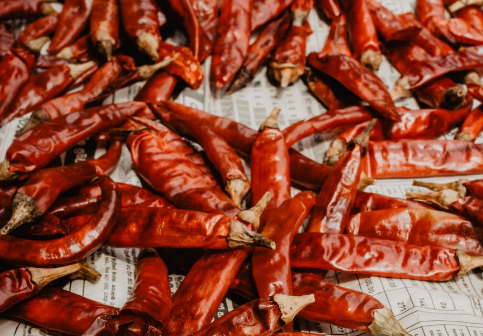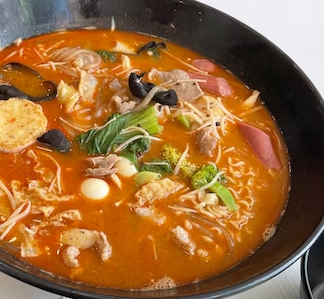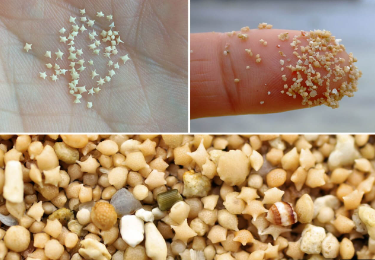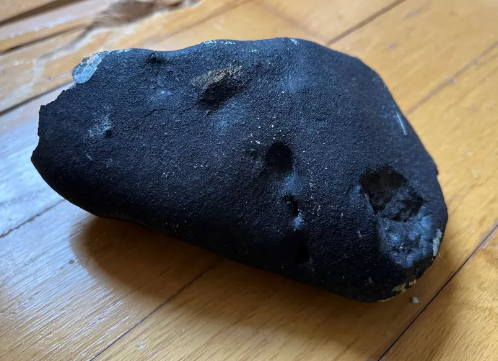마라탕 중독 원인과 부작용
Why Is Mala so Addictive?
Lately, the ‘malatang’ trend is immensely popular among Koreans, particularly in their 20s and 30s and female diners. Besides this dish, a variety of Chinese cuisines like ‘Malaxiangguo’ and ‘xiaolongbao’ are also gaining prominent fame among Koreans.
최근 '마라탕' 열풍이 한국인, 특히 20~30대와 여성 사이에서 큰 인기를 끌고 있습니다. 이 외에도 '마라샹궈', '샤오롱바오' 등 다양한 중국 요리도 한국인들 사이에서 두각을 나타내고 있습니다.

What is Malatang?
The name ‘mala’ means numbness and spicy whereas ‘tang’ literally translates to soup. The dish is well-known for its unique spiciness that will make your tongue numb just as its Chinese characters indicate. The mala sauce, which contains Sichuan pepper, gives the broth an alluring aroma of spicy flavor that will make you addicted to it!
'mala'라는 말은 얼얼하고 매운 것을 의미하고 'tang'은 문자 그대로 수프를 의미합니다. 한자 그대로 혀를 얼얼하게 만드는 독특한 매운맛으로 유명합니다. 사천 고추가 들어간 마라 소스가 육수에 매콤한 맛의 고혹적인 향을 더해 중독성 있게 만듭니다!
Diners can select their favorite ingredients from a choice of fresh vegetables, fish cakes, tofu, noodles, and a choice of meat, typically beef or lamb.
식사를 할때 신선한 야채, 어묵, 두부, 국수, 고기(일반적으로 쇠고기 또는 양고기) 중에서 원하는 재료를 선택할 수 있습니다.

What does spicy food do to our bodies?
One concern is how well our bodies can handle the heat of this popular dish.
When food gets into our digestive tract, it travels down our throat to our oesophagus, and then our stomach. Food gets broken down in our stomach before getting sent to our intestines where the nutrients are absorbed before what’s left is passed out of our bodies.
When we eat spicy food, these parts of the body can get irritated, leading to discomfort and even pain. For those with existing gastrointestinal conditions, the discomfort can be intensified.
매운 음식은 우리 몸에 어떤 영향을 미칩니까?
한 가지 우려할 사항은 우리 몸이 이 인기 있는 요리의 열기를 얼마나 잘 다룰 수 있느냐 하는 겁니다
음식이 소화관에 들어가면 목구멍을 따라 식도를 거쳐 위로 이동합니다. 음식물은 위장에서 분해되어 장으로 보내지고 남은 것은 우리 몸 밖으로 나가기 전에 영양소가 흡수됩니다.
매운 음식을 먹으면 신체의 이러한 부분이 자극을 받아 불편함과 통증을 유발할 수 있습니다. 기존 위장병이 있는 사람의 경우 불편함이 더 심해질 수 있습니다.
Mala sauce primarily contains spicy ingredients such as dried chilli peppers, chilli powder and Sichuan peppercorns. While spicy food dishes ignite some fire in our bellies and even bring along certain health benefits, they can also present some health concerns.
In general, spicy food irritates our stomachs. Chillies and pepper contain a combination of acids which can cause the walls of our stomachs to burn when consumed in larger amounts. In the short-term, one may feel discomfort in the form of stomach pain, throat and oesophagus discomfort, indigestion, bloating and diarrhoea.
마라 소스는 주로 말린 고추, 고추 가루, 사천 후추 열매와 같은 매운 재료를 사용합니다. 매운 음식 요리는 우리의 뱃속에 불을 붙이고 특정한 건강상의 이점을 가져다 주기도 하지만, 일부 건강 문제를 일으킬 수도 있습니다.
일반적으로 매운 음식은 위장을 자극합니다. 고추와 후추에는 다량 섭취할 때 위벽을 타게 할 수 있는 산의 조합이 포함되어 있습니다. 단기적으로는 복통, 목과 식도의 불편함, 소화불량, 팽만감, 설사의 형태로 불편함을 느낄 수 있습니다.
Why Is Spicy Food So “Addictive”?
매운 음식은 왜 그렇게 "중독적"일까요?
Believe it or not, it’s because spicy food makes you high!
믿거나 말거나 매운 음식을 먹으면 기분이 좋아지기 때문입니다!
When you eat spicy food, it tricks your brain into thinking that your body is experiencing a lot of heat. In response to this, your brain releases endorphins, which are natural pain and stress relievers. At the same time, your brain also releases dopamine, which is a neurotransmitter that causes feelings of pleasure. This combination of neurotransmitters is what makes spicy food so “addictive.”
매운 음식을 먹으면 뇌가 몸에 열이 많이 난다고 생각하도록 속입니다. 이에 대한 반응으로 뇌는 자연적인 통증 및 스트레스 해소제인 엔도르핀을 방출합니다. 동시에 뇌에서는 쾌락을 유발하는 신경 전달 물질인 도파민도 방출합니다. 이러한 신경 전달 물질의 조합이 매운 음식을 "중독성"으로 만드는 것입니다.
Remember that capsaicin tricks the brain into thinking that the body is being subjected to immense heat and therefore, immense pain. To relieve us of this pain, our brain secretes neurotransmitters called endorphins, which are commonly referred to as the body’s natural pain and stress relievers. Endorphins abate pain by inhibiting a nerve’s ability to transmit pain signals.
What’s more, simultaneously, the brain also secretes dopamine, the neurotransmitter that elicits feelings of reward and pleasure in us.
The spicier the food, the greater the pain, the more severe is the compulsion to abate this pain and therefore, the greater the sense of euphoria induced.
캡사이신은 뇌를 속여 신체가 엄청난 열에 노출되어 엄청난 고통을 겪고 있다고 생각하게 만듭니다. 이 고통을 덜어주기 위해 우리의 뇌는 일반적으로 신체의 자연적인 통증 및 스트레스 해소제로 불리는 엔돌핀이라는 신경 전달 물질을 분비합니다. 엔돌핀은 통증 신호를 전달하는 신경의 능력을 억제하여 통증을 완화합니다.
게다가 동시에 뇌는 보상과 즐거움을 느끼게 하는 신경 전달 물질인 도파민도 분비합니다.
음식이 더 맵고 고통이 클수록 이 고통을 경감시키려는 충동이 더 심해져서 더 큰 행복감이 유발됩니다.




























